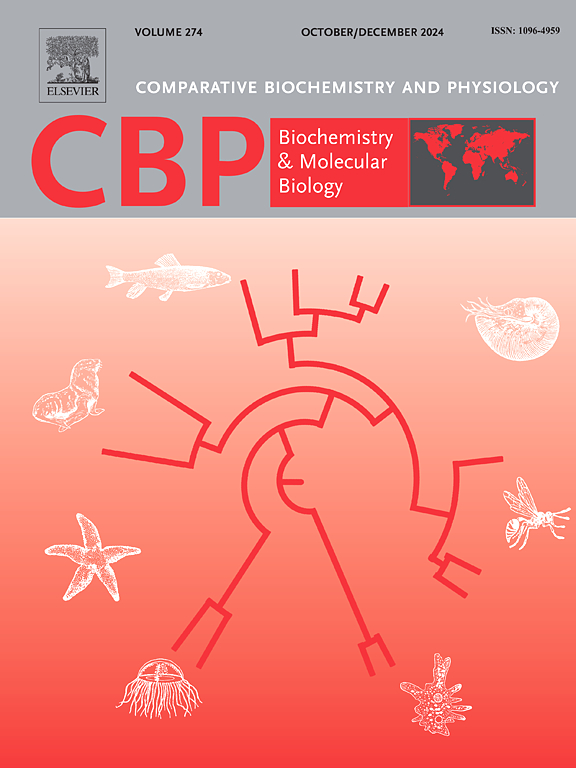Molecular characterization of adenosine monophosphate deaminase 1 and the correlation analysis between its mRNA expression levels and inosine monophosphate content in large yellow croaker (Larimichthys crocea)
Abstract
Declining flesh quality has drawn considerable attention in the farmed large yellow croaker (LYC; Larimichthys crocea) industry. Inosine monophosphate (IMP) is the primary flavor substance in aquatic animals. Adenosine monophosphate deaminase 1 (AMPD1) plays a critical role in IMP formation by catalyzing the deamination of AMP to IMP in the purine nucleotide cycle. To further evaluate the correlation between ampd1 mRNA expression levels and IMP content in the LYC muscle tissue, the relevant open reading frame (ORF) of L. crocea (Lcampd1) was cloned, and the IMP content and Lcampd1 mRNA expression in the muscles of LYCs of different sizes were examined. The ORF cDNA of Lcampd1 was 2211 bp in length and encoded a polypeptide of 736 amino acids (AAs). The deduced protein, LcAMPD1, possesses conserved AMPD active regions (SLSTDDP) and shows high homology with of other teleost fishes. The genomic DNA sequence of Lcampd1 exhibits a high degree of evolutionary conservation in terms of structural organization among species. Phylogenetic analysis of the deduced AA sequence revealed that teleost fish and mammalian AMPD1 were separate from each other and formed a cluster with AMPD3, suggesting that AMPD1 and AMPD3 arose by duplication of a common primordial gene. In healthy LYC, Lcampd1 mRNA was expressed only in the muscle tissue. The IMP content in the muscle of LYCs with different average body weights was measured by high-performance liquid chromatography; the results showed that the IMP content in the muscle of LYCs with greater body weight was significantly higher than that in LYC with lower body weight. Moreover, a similar trend in Lcampd1 expression was observed in these muscle tissues. The Pearson correlation analysis further showed that the Lcampd1 mRNA expression was positively correlated with IMP content in the muscles of different-sized LYCs. These results suggest the potential function of Lcampd1 in determining the IMP content in LYC and provide a theoretical basis for flesh quality improvement, as well as a scientific basis for the development of the molecular breeding of LYC.


 求助内容:
求助内容: 应助结果提醒方式:
应助结果提醒方式:


